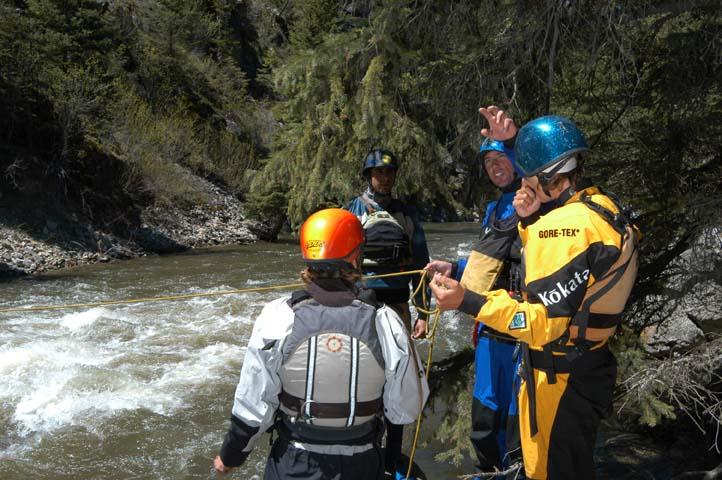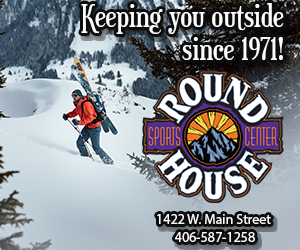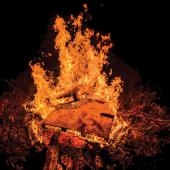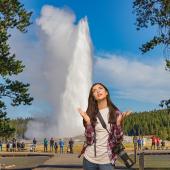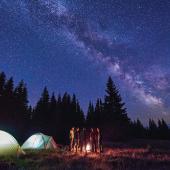Whitewater Safety
Paddling out into a frigid spring torrent strewn with rocks and sucking holes presents a classic test of judgment. How do your ability and experience stack up against the challenge and the hazard? Decide badly, and you may wind up broken or even dead. Know yourself well, have capable support and good gear, and you'll grow with exhilaration.
Not all boating in our area is like wrestling grizzlies with your bare hands. However, each outing has unique hazards. If you¡¦re floating the lower Madison bathtub on a hot June day, your biggest risk is painful solar radiation burns on your shins and whether someone remembered to be the designated sober driver. The scenic and seemingly safe waters of the lower Gallatin don't seem to require much more attention, but there may be a boat-eating sweeper around any blind bend. And the shallows and shoots in the lower reaches of the free-flowing Yellowstone can be totally rebuilt by spring runoff.
American Whitewater (AW) and the American Canoe Association (ACA) collect remarkably good data on boating mishaps. An analysis of the data on whitewater kayaking, for example, tells us a lot about how people get into trouble and how it can be avoided.
The data show that significant mishaps are about equally distributed between beginner, intermediate, and expert kayakers. Just over half the fatalities among kayakers occur when the kayak becomes trapped. The boat can be pinned by rocks, sucked under a sweeper, or stuck in a hydraulic. Again, these are likely to be situations where the kayaker took on a section of difficulty that she didn't expect to encounter, didn't properly assess when scouting, or couldn't physically handle. Maybe upstream rain had elevated a Class III rapid to a Class IV overnight, or maybe it was the first trip of the year, with rusty skills and under-trained muscles. Remember, Montana's free flowing rivers are new each spring – accurate assessment and good judgment are critical to safety.
About one-third of fatalities occur to kayakers who are out of the boat, known as swimmers. Most of these simply drown. The rest get trapped in the same manner as boats. Many of these deaths could have been prevented. For example, if the kayakers had set lines prior to running tough stretches; if they had learned, prepared, and practiced more for a self rescue; if their partners had been more ready to fetch them with a boat or a throw bag; they might be alive today. The gear can't go farther than Toston – always get the swimmer first.
Don¡¦t forget that running rivers in a Montana spring means the air is cold and the paddler is wet¡Xit¡¦s the dynamic duo of hypothermia. Surprisingly, few kayaking fatalities are solely caused by it. The big impact of hypothermia comes in impaired ability to assess and respond to hazardous circumstances. This is a major contributor to mishaps that end up being scored in other categories, but originate with hypothermia. It¡¦s crucial to dress properly.
Besides hypothermia, sudden immersion in cold water rapidly changes body functions in ways that can result in life-threatening impairment. A dunked paddler may inhale water, hyperventilate, develop sluggish coordination or muscle cramps, and experience reduced breath-holding time or even a fatal heart rhythm change. The occasional inadvertent swim is going to happen, but you¡¦ve got to get yourself or your partner out quickly.
See the sidebar for paddling safety tips and information on finding classes, what gear you need, and where you can rent it. Happy paddling, and be safe.
Paddling Safety Tips
- Get proper instruction on paddling techniques. For example, when kayaking you must know how to do a wet exit.
- Practice the techniques and stay in good physical condition.
- Learn proper rescue procedures.
- Dress properly (cotton kills!) and have the right gear.
- Make sure your PFD fits and doesn¡¦t ride up your trunk.
- Choose capable partners and be one yourself.
- Anticipate that immersion will impair your judgment and physical ability.
- Scout the water if you¡¦re uncertain or the situation might have changed.
- Don't be talked into trying something beyond your ability at that moment.
Local Whitewater Safety/Paddling Instruction
American Red Cross 587-4611
Info to come, info to come, info to come, info to come, info to come
website
ASMSU Outdoor 994-3621
Wilderness First Responder: May 21-29, $475 for the public
Beginning Kayaking: March 22-April 26, Tuesday from 6-7:30, $50
River Running: April 23, $75
www.montana.edu/outdoorrecreation
Geyser Whitewater Expeditions 800-914-9031
Swift Water Rescue 3 Certification: May 27-29
www.raftmontana.com
Montana Surf 581-5178
Swift Water Rescue Certification: May 19-22, $300
www.montanasurf.com
Montana Whitewater 800-799-4465
Swift Water Rescue 3 Certification: May 19-20, $250
www.montanawhitewater.com
Northern Lights Outfitters 586-2225
Kayak Fundamentals
Six-week course begins April 13-May 18, $150
www.northernlightsoutfitters.com
Swim Center 587-4724
Has kayak and canoe classes, we are getting in touch on Monday
-------------------------------------------------------------------------------------------------------------------------
Kayak/Canoe/Raft Rentals
Big Boys' Toys 587-4747
Canoe House Rentals 285-3488
Northern Lights Trading Company (The Barn) 585-2090
Panda Sports 587-6280
The Round House 587-1258
ASMSU Outdoor Recreation 994-3621


